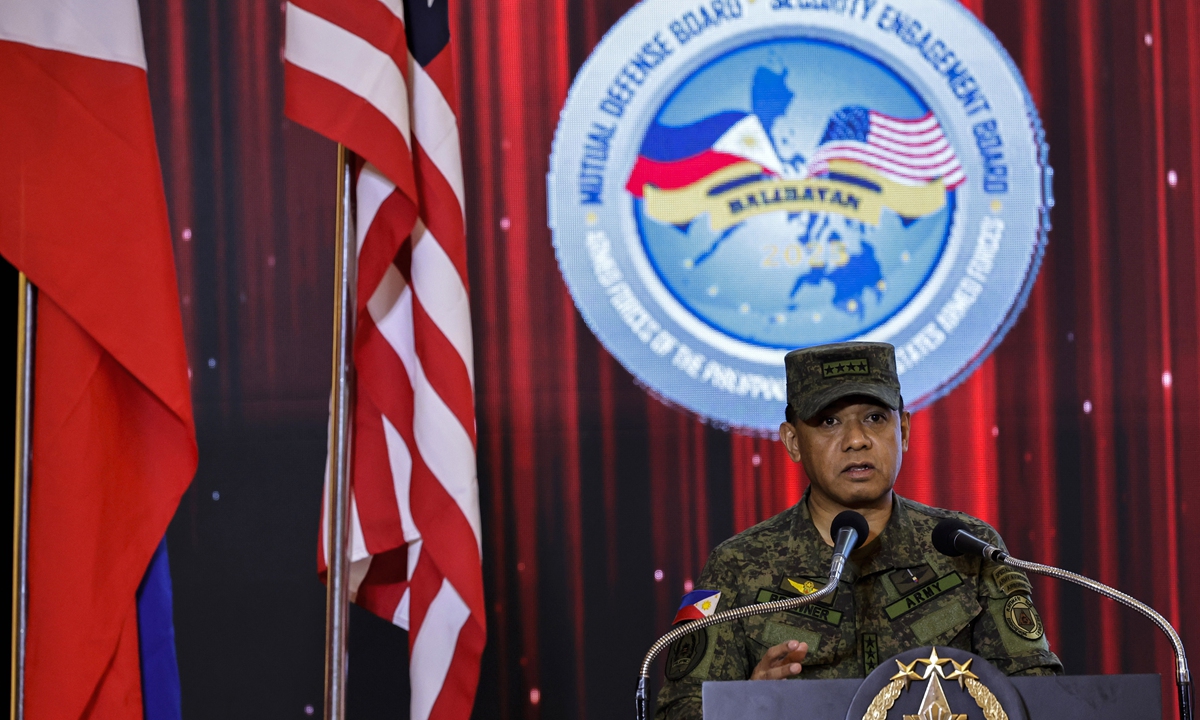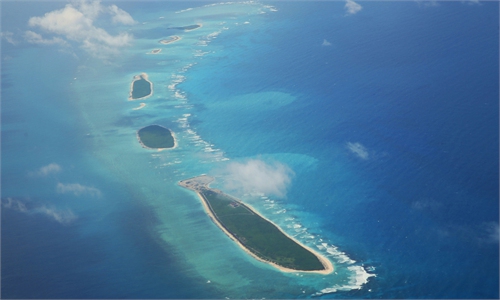US-Philippines joint drills with strategic and tactical weapons 'detested, opposed by regional countries'

US and Philippines armed forces launch their largest annual joint military exercise "Balikatan" on April 21, 2025 in Quezon, the metropolitan area of Manila, the Philippines. Photo: IC
US and Philippines armed forces launched their largest annual joint military exercise "Balikatan" on Monday. According to media reports, troops from the two countries are participating in this year's drills that are staged in western and northern Philippine locations facing South China Sea and the island of Taiwan, which are considered "regional flashpoints."
Responding to media inquiry that a Philippine brigadier general claimed that Manila regards the annual joint military exercise with the US launched on Monday as a rehearsal for their defense, Chinese Foreign Ministry spokesperson Guo Jiakun said on Monday that with the world being hit by unilateralism, protectionism and bullying, countries in this region have been calling for greater solidarity, coordination, and joint efforts to keep the region stable and respond to challenges.
Against this backdrop, the Philippines chose to conduct the large-scale military drills with this country outside the region and brought in strategic and tactical weapons to the detriment of regional strategic stability and regional economic prospects, which puts them on the opposite side of regional countries. This act has been detested and opposed by regional countries, Guo said.
Guo emphasized that the Taiwan question is purely China's internal affair and is at the core of China's core interest. China firmly opposes any country using the Taiwan question as an excuse to strengthen military deployment in the region, heighten tensions and confrontation, and disturb regional peace and stability. We urge relevant sides not to make provocation on the Taiwan question. Those who play with fire will perish by it.
Ding Duo, director of the Research Center for International and Regional Studies at the National Institute for South China Sea Studies, told the Global Times on Monday that the locations and practice topics of this year's drills demonstrate a clear intent to counter China, which should raise China's vigilance.
Approximately 17,000 troops are expected to participate in the exercises, which for the first time will include an integrated air and missile defense simulation to be attended by the Philippine President Ferdinand Marcos Jr, the AFP reported Monday.
Several launchers for the US anti-ship missile system, Navy-Marine Expeditionary Ship Interdiction System (NMESIS) were also reportedly deployed to northern Luzon, the Philippines' largest island, for the joint military exercise running through May 9, Newsweek reported.
Despite the presence of US systems in the country, the Philippines has yet to establish any systemic combat capability, let alone using them in an actual conflict against China, Song Zhongping, a military affairs expert, told the Global Times on Monday.
The US Department of Defense confirmed the NMESIS deployment to the Philippines on April 16, marking the system's first appearance on Philippine territory.
Washington sees Manila merely as a compliant pawn and treats it as an arms market that it can exploit at will, Song said.
In addition to the NMESIS, the Philippines has hosted a US Army Mid-Range Capability ground-based missile system, known as Typhon, since April last year. The system was deployed to northern Luzon for a joint exercise, and the two countries later decided to keep the launcher in the country indefinitely, Newsweek reported.
At a press conference, the US Marine Corps stated that the NMESIS missile system would remain in the Philippines for future exercises if it was "appropriate and requested" by Manila, the report said.
By allowing more US weapons to be deployed and even retained in the country afterward, the Philippines are hoping to use security bonding to further consolidate its alliance with the US, which offered Manila a sense of certainty in its illegal territorial expansion in the South China Sea, Ding explained.
However, the Philippines should not misinterpret the deployment of American weapons as a reassurance for confronting China or stirring up the South China Sea. Any missile launched from a Philippine-controlled military base that poses a threat to China, that missile base could face counterattack , Song warned.




